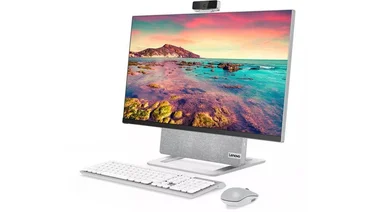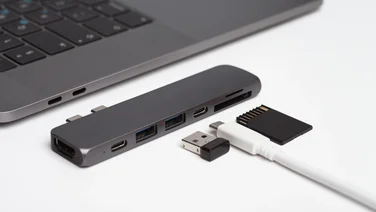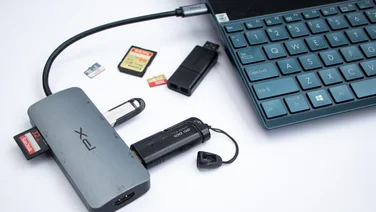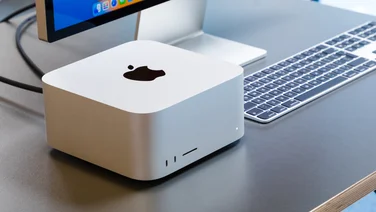To help us provide you with free impartial advice, we may earn a commission if you buy through links on our site. Learn more

- Excellent everyday performance
- Overflowing with expansion options
- Looks great
- Lack of storage space
CPU overclocking can be a cost-free way of boosting your PC’s performance, and as long as you don’t push the chip too far, it’s easier and less risky than you might think. GPU overclocking isn’t much different, but it’s usually possible to simply buy a card that’s been pre-overclocked by the manufacturer.
However, this service inevitably means the card will cost more, which is probably why so far we haven’t yet seen one of these cheap PCs include an overclocked graphics card. That changes with the Palicomp i3 Pulsar, which comes with a 4GB Asus Cerberus GeForce GTX 1050 Ti OC Edition.
READ NEXT: The best gaming PCs you can buy
Also of note is the Intel Core i3-8100 CPU, which means we, at last, have one of Intel’s latest Coffee Lake chips in the midst. This ups the number of physical cores from two (on the Core i3-7100) to four, so we’ll be looking for better multithreaded performance than the CCL Bazooka in our 4K benchmarks.
First, let’s see how that overclocked GPU stacks up. In Dirt: Showdown, the i3 Pulsar managed an excellent 88fps, making it the first GTX 1050 Ti system here to break past 75fps. If you’re playing on a 120Hz or 144Hz monitor, the game should look a tiny bit smoother than it would on, say, the Chillblast Fusion Crossbow or Wired2Fire Pyro Stryker, and it’s an impressive 23fps faster than the PC Specialist Obsidian Elite. However, as we’ve seen, that PC’s GTX 1060 is hampered considerably by its weak CPU.
Buy the Palicomp i3 Pulsar now
The i3 Pulsar is also slightly better in Metro: Last Light Redux than its GTX 1050 Ti peers, but this time it’s only by frames in the single digits, which doesn’t amount to a visible difference. That’s not to put down its quality: 30fps on Very High settings is very good, as is its 69fps on Medium settings with both tessellation and advanced PhysX switched off.

Its SteamVR Performance Test score of 3.7 is also very high by the underlying GPU’s standards, even if it’s middling in the grander PC scheme. Although you’ll still need to stick with medium-ish settings to get smooth frame rates in virtual-reality games, you should be able to get away with one or two higher settings than with the Cyberpower Ultra 3 GTX (which scored 2.7) or the Pyro Strkyer (which scored 3.0).
It was a mild surprise that Dirt: Showdown benefitted more from the GPU overclock than Metro. Typically, it’s the latter that’s more singularly dependent on graphical power, whereas Dirt also leans heavily on CPU speed. Still, the i3 Pulsar is comfortably up in the top tier of gaming capability for £600, so we have no complaints there.
As for that Coffee Lake chip, not only did it thrash the Bazooka’s Kaby Lake in our benchmarks, it also helped the i3 Pulsar edge ahead of all the Ryzen 3-based competition as well. Specifically, it scored a decent 102 in the image test, a good 113 in the video test and a great 114 in the multitasking test, for 112 overall. That represents the kind of all-round everyday proficiency you could have expected from certain Core i5 chips this time last year.
Only the Mesh Ryzen Gaming PC – CS does significantly better, with its Ryzen 5 1600, and even that doesn’t help it overcome the i3 Pulsar’s advantage in games (for other single-core tasks it is slightly more efficient).

Yet another distinct quality of Palicomp’s PC is that it makes the most of its ATX-compatible case – the Cooler Master Masterbox Lite 5, the same as the Ultra 3 GTX – with a full-size ATX motherboard, rather than making do with a microATX model to cut costs. As a result, it’s relatively overflowing with spare slots and expansion opportunities: there’s one empty PCI-E x16 slot, two M.2 slots and a generous four PCI-E slots all ripe for the taking, along with two of its four RAM slots, the other two being occupied with 8GB of DDR4 memory.
It also uses the high-end Z370 chipset, not the mid-range B250 or budget H110. Admittedly, most of this chipset’s advantages don’t come into play with the locked-down Core i3-8100, but should you ever update to an unlocked, overclockable CPU, you’ll already have a motherboard that supports doing so.
Since this PC shares the same case as Cyberpower’s, it shares the same strengths and weaknesses. On the upside, the chassis provides two speedy USB 3 ports on the front, plus ample cooling/radiator upgrade potential, not to mention good looks inside and out. However, there’s also a lack of storage space: just two 3.5in trays, with a single 2.5in bracket.
Next to all the SSHD and SSD-plus-hard disk configurations in this group test, the i3 Pulsar’s sole mechanical hard disk also looks like one of the poorer – or, at least, slower – options. Fortunately, it’s a 2TB drive, so you get a vast capacity for files and games even if you don’t get fast booting and loading times.
Buy the Palicomp i3 Pulsar now
Rear connectivity is fairly standard, too, with two USB 2 ports, four USB 3 ports and one PS/2 port for peripherals. A Gigabit Ethernet port serves for networking, audio is handled by the typical line-in, line-out and microphone 3.5mm jacks, while the choice of video outputs is the same as on any GTX 1050 Ti: one HDMI, one DisplayPort and one DVI-D.
Palicomp i3 Pulsar review: Verdict
Of course, the i3 Pulsar’s true strengths are found back on the inside. Even if it’s only by small margins, that overclocked graphics card makes this PC one of the best for straight-up gaming power. The Obsidian Elite performs better in certain situations, but the i3 Pulsar beats it in others, and this comes with a far stronger processor and more upgrade-friendly motherboard to boot.





